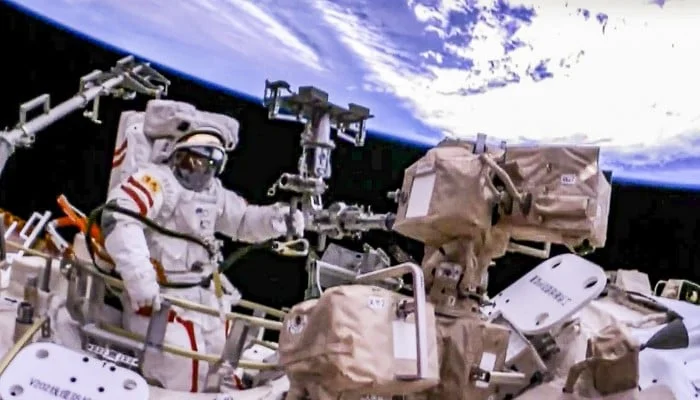
New Bacteria Species Found on China’s Tiangong Space Station: A Microbe Built for Space?
A groundbreaking discovery has been made aboard China's Tiangong space station: a previously unknown species of bacteria. This microbe, dubbed Niallia tiangongensis, exhibits unique characteristics that allow it to thrive in the harsh conditions of space, hundreds of kilometers above Earth. This finding, detailed in the International Journal of Systematic and Evolutionary Microbiology, has significant implications for astronaut health, spacecraft functionality, and our understanding of microbial adaptation.
According to researchers from the Shenzhou Space Biotechnology Group and the Beijing Institute of Spacecraft System Engineering, the discovery stems from swabs taken from the Tiangong cabin in May 2023 by the Shenzhou-15 crew. These samples were part of a larger investigation under the China Space Station Habitation Area Microbiome Programme, designed to understand the microbiome that thrives within the space station environment. Interestingly, the study reveals that Tiangong's microbiome significantly differs from that of the International Space Station (ISS).

Niallia tiangongensis is closely related to Niallia circulans, a soil-dwelling bacterium known for its ability to form hardy spores to withstand stressful conditions. However, the space-borne relative boasts some crucial differences. The analysis of its genes reveals a unique ability to break down gelatin, a skill useful for constructing protective biofilms when conditions get rough. Conversely, it appears to have lost the ability to utilize other energy sources that its terrestrial cousins readily consume.
One of the most remarkable findings is N. tiangongensis's enhanced ability to combat oxidative stress and reverse radiation-induced damage. Considering the intense radiation environment in space, this adaptation is crucial for survival. Scientists believe decoding these survival mechanisms could lead to applications in various fields, including space technology, agriculture, and medicine, allowing us to design precise and targeted control strategies for microbes.
The discovery highlights the astonishing adaptability of bacteria and the challenges of maintaining sterile environments in space. As past studies of NASA's 'clean rooms' (used to prepare missions like the Mars Phoenix lander) have demonstrated, novel microbial strains with remarkable survival capabilities are common.
While the research has been going on for a while, and the team has yet to determine the threat of Niallia tiangongensis to the astronauts or the station, understanding how these microbes adapt and evolve in space is critical. Given the potential for space microbes to cause health problems (especially considering a related strain can cause sepsis) as humanity ventures further into space with missions to the Moon and beyond, addressing this issue will be paramount. The ability of these microbes to adapt and thrive in extreme conditions in space is a really serious potential issue.
What does this discovery mean for future space exploration? Will this research lead to new methods of protecting astronauts from space-borne illnesses? Share your thoughts and concerns about this fascinating discovery in the comments below!